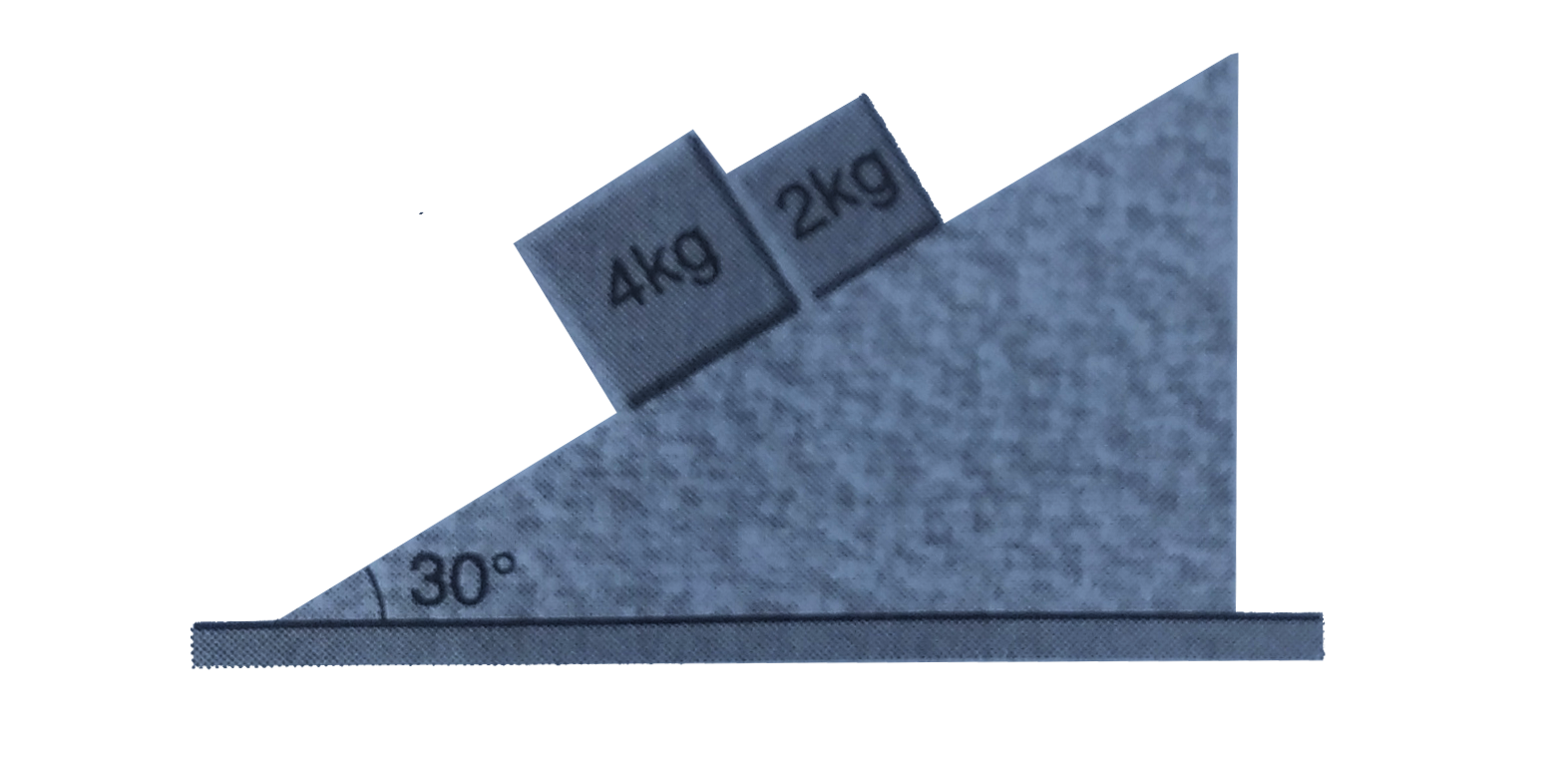A block of mass 25 kg is raised by a 50 kg man in two different ways as shown in figure. What is the action on the floor by the man in the two cases ? If the floor yields to a normal force of 700 N, which mode should the man adopt to lift the block without the floor yielding?

Here, mass of block m = 25 kg, Mass of man M = 50 kg Force applied to lift the block or tension in string is
T=mg=25×9.8=245N
Weight of Man
W=mg=50×9.8=490N
a) When block is raised by man as shown in figure (a), force is applied by the man in the upward direction. This increases the apparent weight of the man. Hence reaction of the floor on the man ui apparent weight of man or action on the floor is:
R (or) W1=W+T=490+245=735N
b) When block is raised by man as shown in figure (b), force is applied by the man in the downward direction. This decreases the apparent weight of the man. Hence reaction of the floor on the man or apparent weight of man or action on the floor is
W1=W−T=490−245=245N
As the floor yields to a normal force of 700 N, the mode (b) has to be adopted by the man to lift the blocky
Similar Questions
A block of mass 25 kg is raised by a 50kg man in two different ways as shown in fig. what is the action on the floor by the man in the two cases? If the floor yields to a normal force of 700N, which mode should the man adopt to lift the block without the floor yielding?

View SolutionA block of mass 'm' is raised by a man of mass m2 in two different ways as shown (m1=25kg,m2=50kg)

View SolutionTwo block of masses 2kg and 4kg are released from rest over a smooth inclined place of inclination 30∘ as shown in figure what is the normal force between the two blocks?

View SolutionIn fig. the block of mass M is at rest on the floor . At what acceleration with which should a boy of mass m climb along the rope of negligible mass so as to lift the block from the floor?

View SolutionIn fig. the block of mass M is at rest on the floor . At what acceleration with which should a boy of mass m climb along the rope of negligible mass so as to lift the block from the floor?

View SolutionOn a smooth table two blocks of masses 2.5kg and 1.5kg are placed one over the other as shown in figure. If the coefficient of static friction between two blocks is 0.2, the maximum horizontal force to be applied on the lower block so that the two blocks move together is (g = ms−2)

View SolutionTwo blocks of mass 4kg and 6kg are connected by a string as shown in the figure. They are initially at rest on the floor. Calculate their acceleration when a force of (a) 50N (b) 100N is applied on the pulley.
View SolutionA block of mass 2 kg is at rest on a floor . The coefficient of static friction between block and the floor is 0.54. A horizonatl force of 2.8 N is applied to the block . What should be the frictional force between the block and the floor ? ( take , g=10m/s2)
View SolutionTwo bodies A and B of masses 10kgand5kg placed very slightly seperated as shown in figure The coefficient of friction between the floor and the block are as μs=0.4 block A is pushed by an external force F The value of F can be changed when the weight between block A and ground breaks block A will start prssing block B will start pressing the vertical wall

If F=50Nthe friction force acting between block B and ground will be
View SolutionTwo bodies A and B of masses 10kg and 5kg placed very slightly seperated as shown in figure The coefficient of friction between the floor and the block are as μs=0.4 block A is pushed by an external force F The value of F can be changed when the weight between block A and ground breaks block A will start prssing block B will start pressing the vertical wall

If F=20N,with how much force block A press block B?
View Solution

